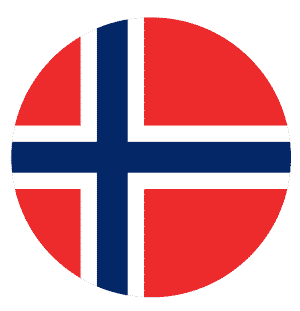By Simon Duke; additional reporting by Andrew Moriarty
Chocolate giants such as Hershey, Nestlé, and Mondelez International have been grappling with heightened input costs in the past few quarters. Cocoa bean futures prices have nearly tripled in value this year. Additionally, major processors have run down inventories due to rising interest rates, which have increased the costs of cold storage.
Now that the Easter period (a period when shoppers tend to be more willing to splurge on chocolate) is over, they have turned their attention to post-Easter prices and waiting to see if consumer demand destruction occurs as the full rate of the increases flows through to retail shelf pricing.
Cocoa prices have nearly tripled in value this year.
The previous high of $4,854/MT for cocoa bean futures was set in July 1977 on the spot ICE New York exchange. This was surpassed in February 2024, and spot prices have continued their meteoric rise to trade at around $8,400/MT as of the beginning of May, according to Mintec Analytics. On the ICE London spot futures contract, prices traded at around £7,800/MT as of the beginning of May, marking a 220% increase year-on-year.
The rise has been attributed to a number of factors, chiefly the drop in production so far this season, with Mintec sources estimating that global production for 2023/24 is likely to be some up to 20% lower than 2022/23. Much of this drop can be attributed to an increase of instances of the Swollen Shoot Virus (SSV) which destroys tree productivity in West Africa. In addition, other factors such as neglect, a lack of fertilizers and other inputs, low and delayed farmgate payments to farmers, new EU deforestation legislation, and robust consumer demand have all contributed to higher cocoa bean prices over the past year. In addition, the two key cocoa components of chocolate – cocoa butter and cocoa liquor – have seen their increases far surpass those of the cocoa bean due to pricing ratios set by major processors. These ratios have seen the price increases for butter and liquor nearly double those of the cocoa bean.
Mintec is now hearing from many manufacturers and retailers that most buyers have very little cover during the second half of 2024, with many having delayed purchasing in anticipation of a drop in prices. This has forced them to re-enter the market and buy cover in the spot market at substantially higher price levels, which is causing some switching and reformulation away from traditional chocolate products and towards alternatives like compound, where cocoa fats such as cocoa butter are substituted with vegetable oil. “Shrinkflation” is becoming an increasingly common way to mitigate the rising price of chocolate as well.
On 25 April, Ulf Schneider, CEO of Nestlé, stressed that for the remainder of the year, Nestlé is largely covered as part of its forward contracting. "We'll now need to see where the prices go so that we can articulate and work out our strategies for the year '25," he said during the company's Q1 2024 earnings call.
"On the cocoa price development, obviously, everyone watched with a certain degree of amazement the trading patterns in cocoa recently. I won't speculate here on where it's going," he added.
"The current market is being impacted by factors beyond supply and demand. Lack of liquidity, new regulations, and market speculation have all contributed to the record high prices we are experiencing ... We have robust processes in place to ensure continuity of supply and good visibility into our costs. We are well covered for 2024," also shared Michele Buck, CEO, The Hershey Company during her company’s Q1 2024 earnings call on 3 May.
Buck added: “While the 2023/2024 crop in West Africa declined, we are encouraged by the growth in other regions around the world and steps being taken in West Africa to improve supply. Farmer prices have increased, which should enable them to make more investments in fertilizer, pesticides, and other techniques to improve yields.”
During Mondelēz International's Q1 2024 earnings call on 30 April, CFO Luca Zaramella provided a bullish outlook for the cocoa price situation and said he is confident in what the new cocoa crop data will show, anticipating a market correction by September or October.
"We truly believe that current cocoa prices are the results of a series of accidental circumstances that over time, we believe, should go away. I think you all know that the main crop last [calendar] year was problematic. But as you might have read from multiple sources, the mid-crop is already looking much better. But also on the other side, on the demand side, the industry went a little bit shorter than usual on coverage and now, by out of necessity to replenish minimum stocks, really provide support to the current high prices," he said.
"I think in this context, we truly believe that the current market structure does not warrant the current market prices. The question becomes when is the correction going to take place? And most likely, the answer is in September, October, as the data for the new crop becomes available," Zaramella added.
"We believe the market is overreacting. The current prices are not sustainable. And should the correction happen, which we expect towards the end of Q3, most likely, we will be ready to take advantage of lower prices. Now I don't want to give you the false impression that we are not going to have inflation in cocoa in '25 because reality is, in 2024, we are covered at materially better prices than current market," Mondelēz International's CFO went on to say.
He stressed, however, that his company is looking into all possible scenarios, including a potential worst-case scenario in 2025.
Dirk Van de Put, Chairman and CEO of Mondelēz International, also reminded investors that despite the cocoa headwinds, chocolate volume continues to grow.
"We are confident in our chocolate business for 4 main reasons: our cocoa coverage strategies, our approach to pricing, our supply chain, and our iconic brands," he stated.
On cocoa coverage, he echoed Zaramella's comments. "We are fully covered for 2024 and well protected heading into 2025. Our teams continue to monitor the market very closely to put ourselves in the best position possible. While poor weather and other factors on the supply and demand side have driven prices to unprecedented levels, we believe there will eventually be a market adjustment. We are confident that our teams are putting in place the right strategies to provide future flexibility."
"We're confident that we are well equipped to navigate a relatively short-term headwind and that we're structurally advantaged to accelerate long-term growth in this category," Van de Put added.
Cocoa prices currently form about 10% and 20% of Mondelez's and Hershey's cost-of-goods-sold (COGS), respectively, according to Jefferies.
Despite robust consumer demand, reduced supply, and short industry cover, cocoa futures have tumbled from their highs in recent days, with the spot ICE New York cocoa bean futures price losing nearly $3,400/MT or 28% over the past two weeks to the beginning of May.

.png?width=145&height=54&name=Mintec_Logo_Small_Use_Mono_RGB%20(2).png)


















